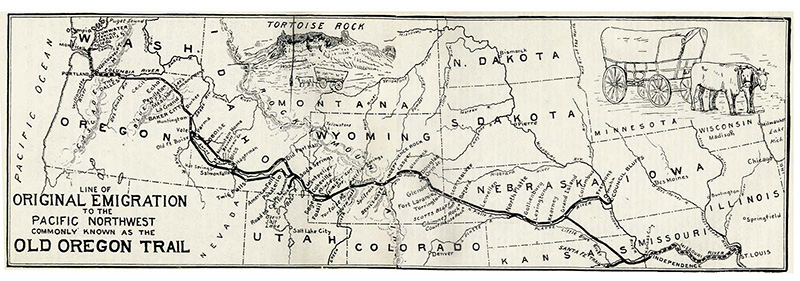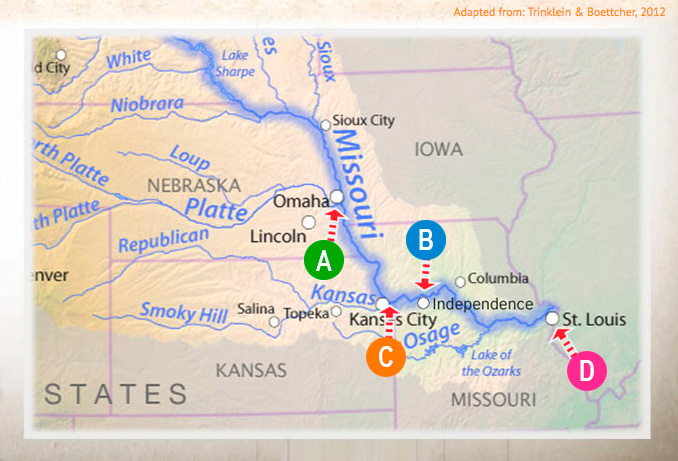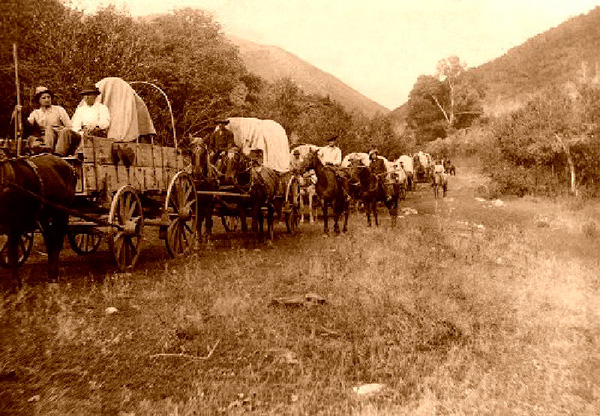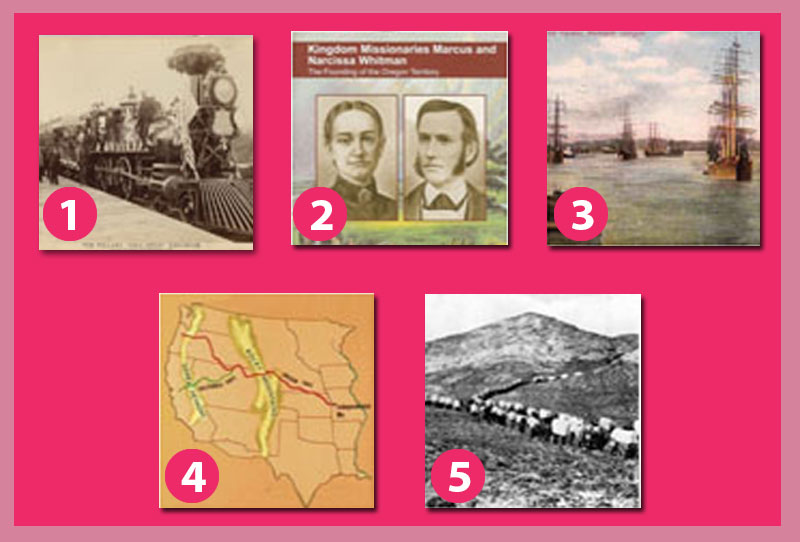

You will study the Features of a paragraph.




Imagen: Map showing the location of the Oregon Trail. Public Domain.https://upload.wikimedia.org/wikipedia/commons/1/19/Oregontrail_1907.jpg
Instructions: Read the text about the Texas War of Independence. Look at the words in bold.
| Introduction | The Oregon Trail is a 2,170-mile (3,490 km) historic east-west, large-wheeled wagon route and emigrant trail that connected the Missouri River to valleys in Oregon. |
|---|---|
| Development | The Oregon Trail was laid by fur trappers and traders from about 1811 to 1840, and was only passable on foot or by horseback. Wagon trails were cleared increasingly farther west and eventually reached all the way to the Villamette Valley in Oregon, at which point what came to be called the Oregon Trail was complete, even as almost anual improvements were made in the form of bridges, cutoffs, ferries, and roads, which made the trip faster and safer. |
| Conclusion | From the early to mid 1830s the Oregon Trail and its many offshoots were used by about 400,000 settlers, farmers, miners, ranchers, and business owners and their families. Its use declined as the first transcontinental railroad was completed in 1869. |
The Oregon Trail. Retrieved and adapted October, 2016 from https://en.wikipedia.org/wiki/Oregon_Trail

Instructions: Read the text again to do the activities suggested.
The Oregon Trail is a 2,170-mile (3,490 km) historic east-west, large-wheeled wagon route and emigrant trail that connected the Missouri River to valleys in Oregon.
The Oregon Trail was laid by fur trappers and traders from about 1811 to 1840, and was only passable on foot or by horsebak. Wagon trails were cleared increasingly farther west and eventually reached all the way to the Villamette Valley in Oregon, at which point what came to be called the Oregon Trail was complete, even as almost anual improvements were made in the form of bridges, cutoffs, ferries, and roads, which made the trip faster and safer.
From the early to mid 1830s the Oregon Trail and its many offshoots were used by about 400,000 settlers, farmers, miners, ranchers, and business owners and their familiers. Its use declined as the first transcontinental railroad was completed in 1869.
The Oregon Trail. Retrieved and adapted October, 2016 from https://en.wikipedia.org/wiki/Oregon_Trail
Instructions: Match the two parts of the sentences.

Instructions: Read about the features of a paragraph.
A paragraph is a group of about 6 sentences of a topic.
In a good paragraph, every sentence is about the same topic.
Together, the sentences express the most important facts or ideas about the topic.
When the writer wants to write about another topic, he or she begins a new paragraph.

Instructions: Read the paragraph. Then in each letter select the number of the sentence that provides information about the corresponding place on the map.
(1) The Missouri River west from St. Louis. (2) Here, most emigrants traveling to the west loaded thier wagons onto steamships to start the journey. (3) It was easy traveling, but didn’t last long. (4) Two hundred miles from St. Louis, the river takes a sharp turn to the north. (5) So the pioneers unloaded their wagons at one of the small towns along the Missouri River called “jumping off” places. (6) The town called Independence was the first option. (7) Further upstream were Westsport, St. Joseph, Omaha and Council Bluffs.


Instructions: Listen to the paragraph to decide if the statements are T (true) or F (false)

Imagen: Wagon train. Retrieved August 2014, from: http://amadorgold.net/logansalley/photo/WagonTrain.jpg

Instructions: Match each number with the paragraph that it represents in the images.
